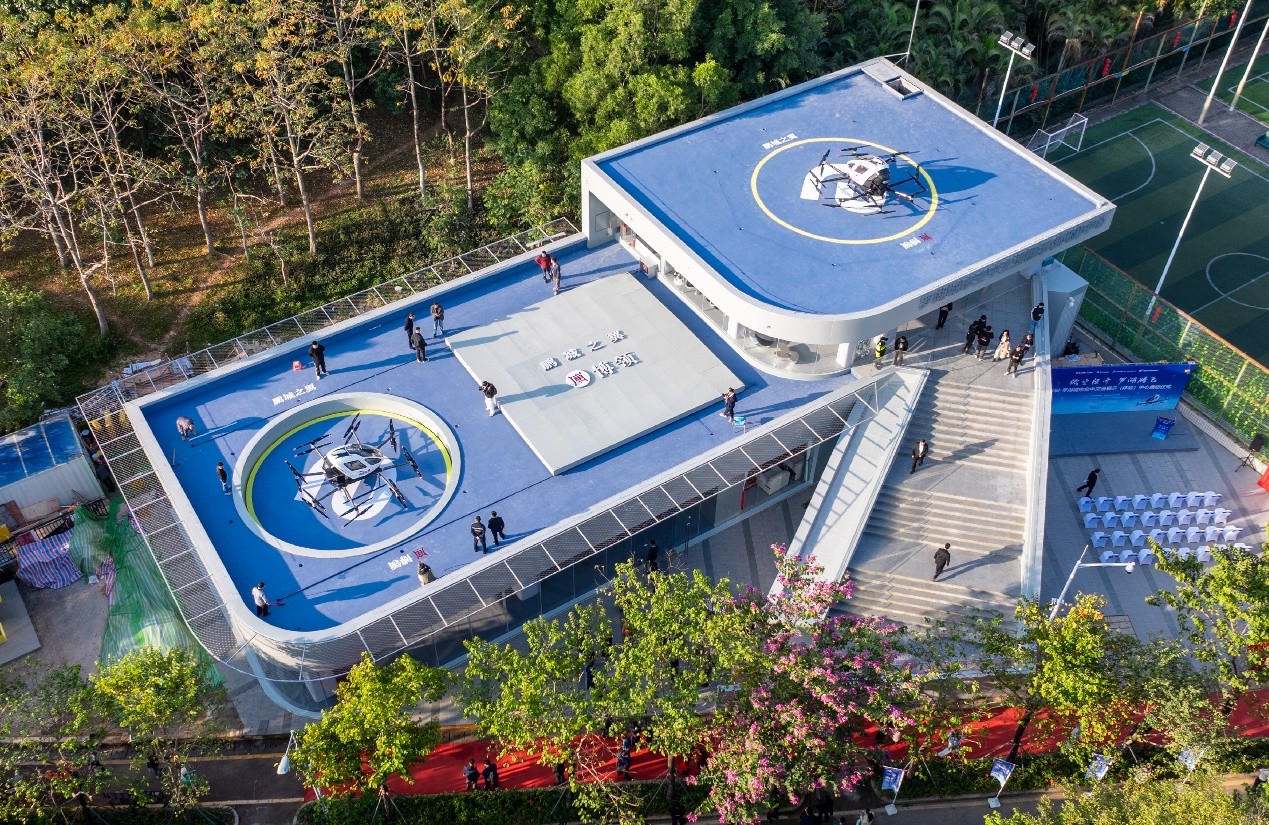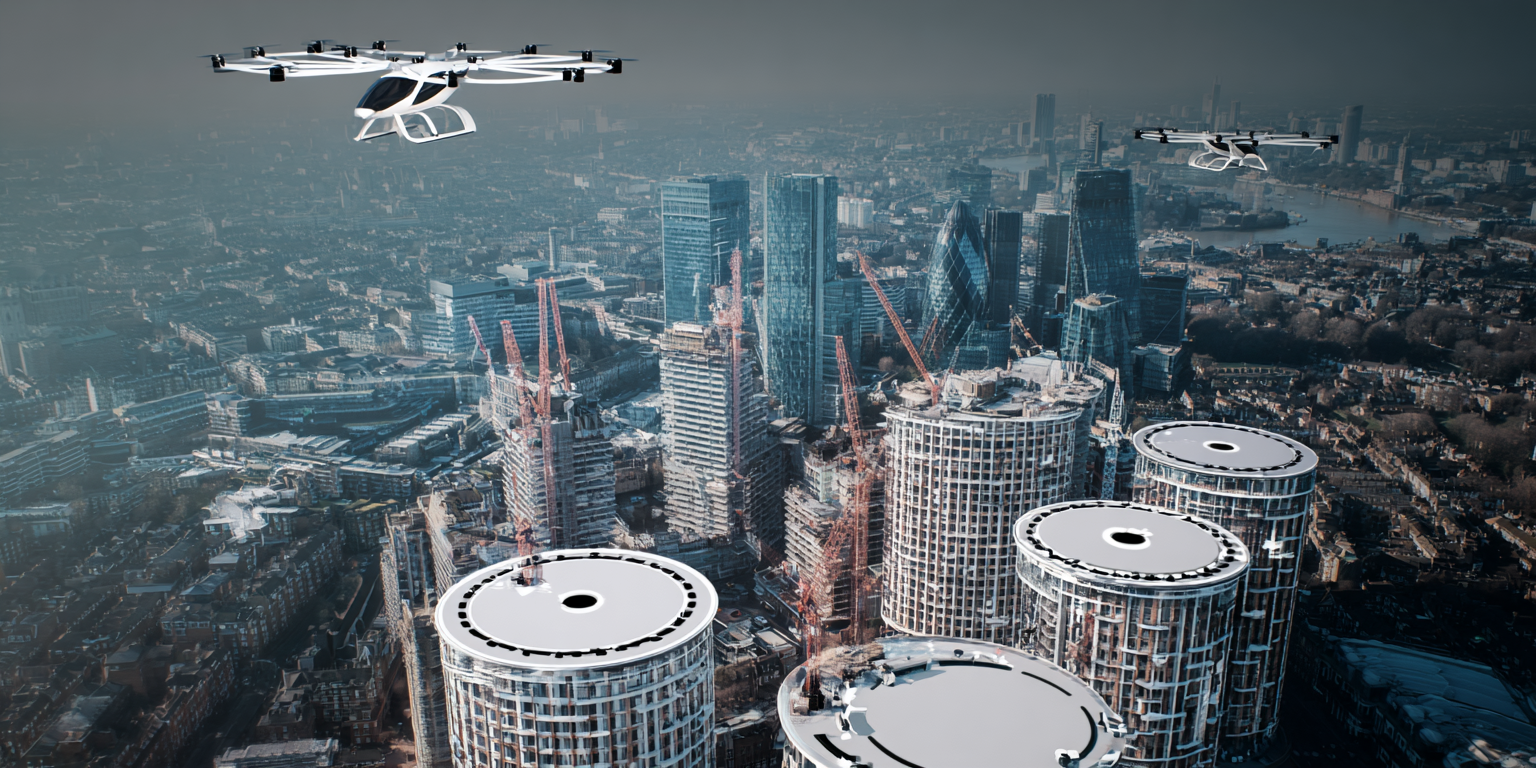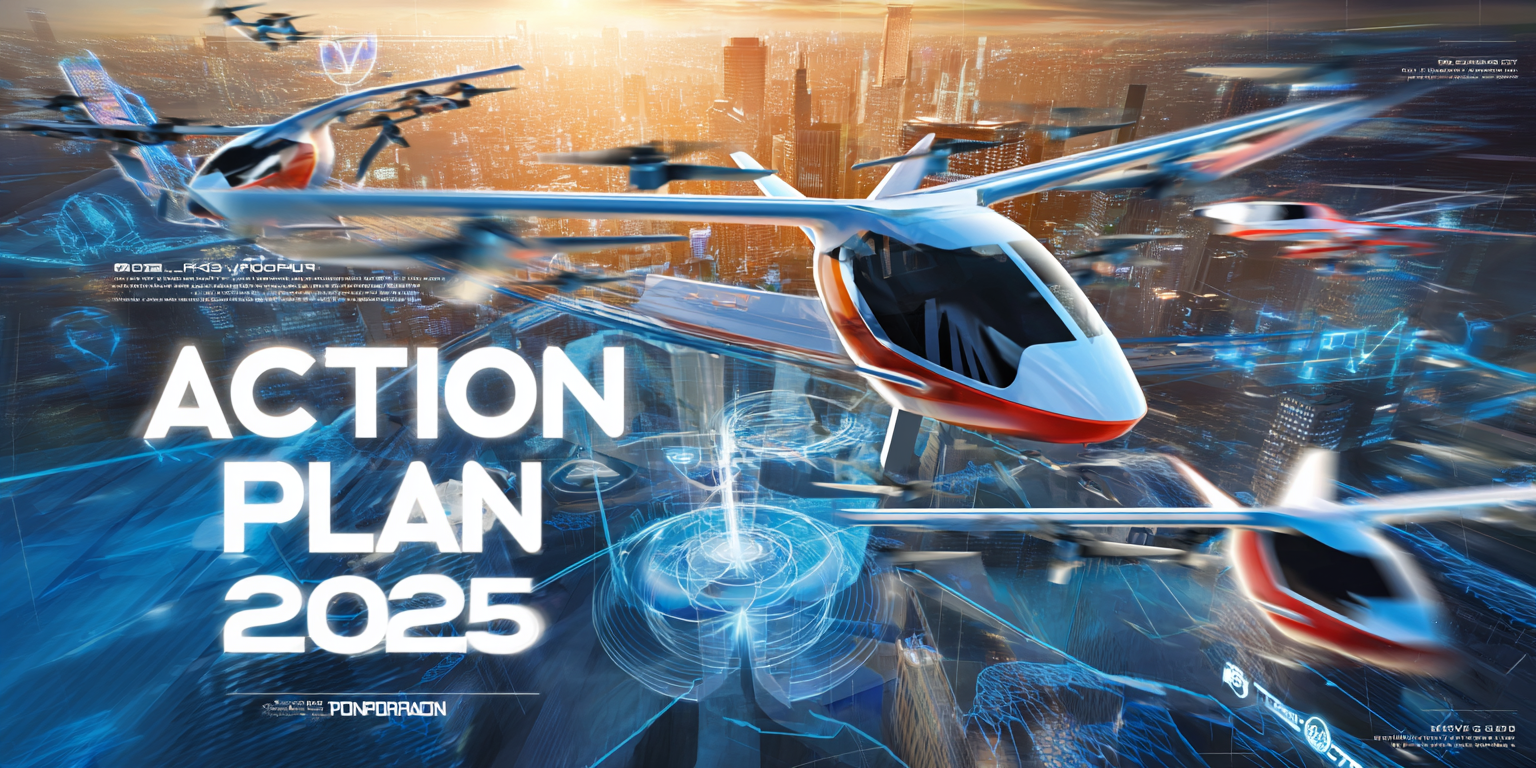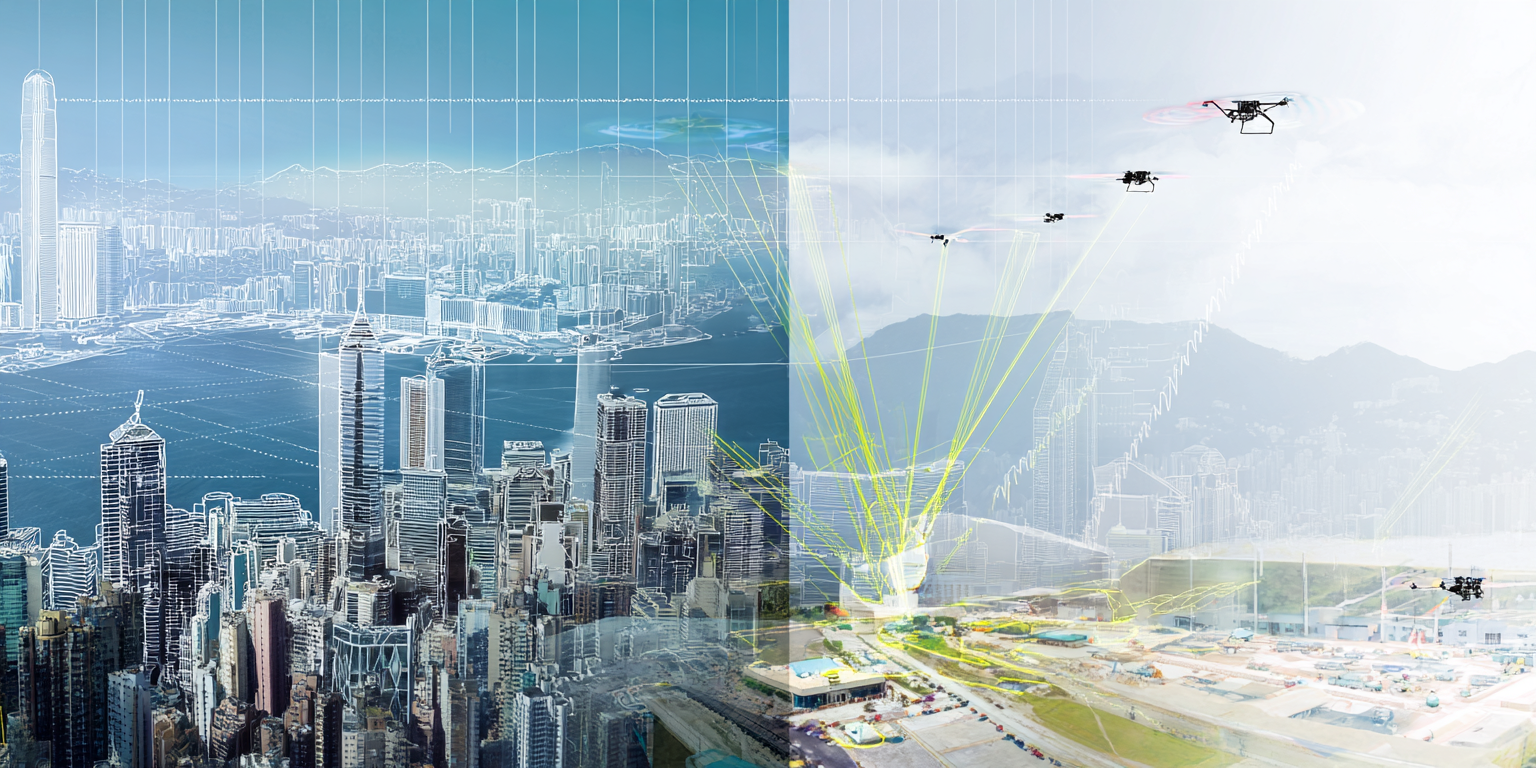Flying cars promised a skyline uncluttered by traffic jams and crowded subways. Instead, the low-altitude economy delivered a lesson in stubborn realities: airborne mobility depends on a network of landing infrastructure that remains devilishly hard to build. Manufacturers chase electric vertical takeoff and landing (eVTOL) certification. Investors dump billions into electric aviation, hoping for urban air mobility (UAM) to materialize. However, progress on the ground, specifically constructing the vertiports where these vehicles might actually land, has proven to be the industry’s toughest choke point.
Early aviation pioneers discovered quickly that wings granted only so much freedom; the rest depended on runways. Today’s eVTOL challenge is even knottier than past generations faced. The critical question has shifted. It’s no longer about developing the right landing pads for new aircraft. Now, it’s about whether the industry can build them in the right places, at a price the market will bear, within noise thresholds that neighborhoods accept, and under regulatory structures that remain works in progress.
Land: The Ultimate Bottleneck
Urban real estate is notoriously unforgiving. The logistics of siting a vertiport are dictated by iron laws of scarcity, as relevant in New York or Sydney as they are in Singapore. A single vertiport might require anywhere from 1.4 acres for modest operations to upward of 14 acres for facilities worthy of heavy traffic. Even in less dense cities, figuring out where to plant this infrastructure is no trivial task.
Land acquisition costs spiral quickly in dense urban cores, with properties in places like Singapore fetching upwards of $20 million per acre. Suburban locations are slightly better, but still run $2 million to $5 million per acre before a single structure gets built. And all these calculations assume an ideal world; friendly sellers and expedient zoning approvals are rare commodities in cities with parking spots selling for the cost of a cottage.
Singapore, an early adopter and archipelago of ambition, illustrates both what’s possible and what’s maddeningly hard. The government has earmarked $650 million for urban air mobility by 2030, but viable vertiport sites number fewer than a dozen, hampered by packed development, existing air corridors, and clashing infrastructure plans.
Contrast that with Australia. Despite the abundance of land, approval processes often stretch over two years. Local powers weigh noise complaints from residents against the need for new housing, creating logjams even when developers have the necessary funds.
Retrofit Versus Reinvention in America
The United States sketches a different road map, favoring the retrofit model over new construction. With thousands of heliports scattered nationwide, American vertiport development mostly piggybacks on existing sites. Oklahoma’s $35 million spending package exemplifies this pragmatism, focusing on integrating medical and emergency services rather than developing new urban networks. Heavyweights like Joby Aviation and Archer team up with familiar airport operators, leveraging partnerships that sidestep some regulatory hurdles.
In 2025, the Federal Aviation Administration (FAA) updated vertiport design guidelines. Yet the regulatory environment stays fractured; Maryland, Michigan, Georgia, Texas, Kansas and others trek divergent paths, each reflecting local values and funding quirks. Most U.S. progress is driven by private capital, which keeps projects disciplined but hinders national coordination on the scale seen in China.
Major cities, including Los Angeles, Miami, and Dallas, operate test projects near busy transit hubs. This makes sense; transportation planners want seamless integration. Expect American vertiport networks to remain more modest and clustered than sprawling Chinese deployments. Notably, Atlantic Aviation’s buyout of Ferrovial Vertiports points towards consolidation favoring established aviation companies over startups.
Europe’s Measured March
Europe’s vertiport blueprint is driven by regulation and caution. The European Union Aviation Safety Agency (EASA) coordinates standards with the FAA; yet, only 13 vertiports are represented on the continent’s project boards, compared to more than 200 across East Asia.
This divide reflects both tight control and geographic limitations. Cities in Germany, Britain, and France champion what little development exists, but even flagship programs focus mainly on demonstration flights rather than commercial services. Munich-based Lilium works to connect German vertiport networks, while London is pushing “Skyports” in partnership with Urban-Air Port.
Paris used the 2024 Olympics to showcase eVTOL integration, but the focus is on proof of concept, not a broad rollout. The regulatory framework is largely in place, but actual investment in infrastructure lags behind that of the Americans and the Chinese.
Middle East: Building From Scratch
If you look for real ambition, the Middle East is setting the pace, at least in terms of future planning. The United Arab Emirates constructed its first vertiport at Ras Al Khaimah International Airport and is laying the groundwork for commercial air taxi service. Dubai’s facility at its main airport, built with Skyports, targets high-end travelers.
Saudi Arabia’s Neom project is in a league of its own. This city is designed to dispense with traditional cars, using eVTOLs for everything from cross-town hops to longer hauls. Saudi Arabian Airlines has inked deals for 100 Lilium Jets, while FlyNow Arabia’s fresh investment pushes the envelope for electric air mobility.
The region’s strength lies in flexibility; modern urban plans can weave vertiports into the bones of new developments. The UAE’s recent $40 million infusion for urban flight testing speeds regulatory adaptation and allows commercial service to arrive earlier than in Europe or North America.
China: The Infrastructure Race
China’s vertiport expansion makes Western efforts look halting by comparison. Shenzhen, already a tech powerhouse, plans to build over 1,200 VTOL sites by 2026, with nearly 400 for passengers. Chongqing’s ambitions run even higher, backed by billions in funding.
This isn’t speculative planning. Construction is underway. China excels at coordinated infrastructure development, with central directives cascading down, and cities competing for the boldest implementations.
Chinese companies have demonstrated their readiness for commercial operations. EHang delivered nearly 300 aircraft by the end of 2024, with an additional 400 set for delivery in 2025. Luohu District in Shenzhen opened 15 specialized vertiports in January 2025, including a flagship Urban Air Mobility Experience Center. Suzhou’s plan for 200 sites by 2026 is equally aggressive.
 Image: Urban Air Mobility Exhibition (Experience) Center at Luohu Leisure Park in Shenzhen, China
Image: Urban Air Mobility Exhibition (Experience) Center at Luohu Leisure Park in Shenzhen, China
Technological prowess backs these numbers. AutoFlight, a Shanghai-based firm, holds several eVTOL records, including the longest electric flight and the first certified cargo vehicle weighing over one ton. Its Prosperity air taxi has amassed 1,100 preorders and $100 million in recent funding, confirming that Chinese manufacturers aren’t just talking, they’re delivering.
China’s infrastructure sprint comes from necessity. With just 286 heliports nationwide, cities lack legacy hardware and must build new networks. The pattern is clear: while America retrofits, China constructs from scratch.
Japan, meanwhile, is using Expo 2025 as a platform for showcasing eVTOL. SkyDrive’s demonstration flights at the EXPO Vertiport reveal dual aircraft parking and advanced operational coordination.
Singapore’s Yugo partnership with Eve Air Mobility highlights the challenges of finding space in dense city-states; despite robust government support and a $650 million pledge, fewer than a dozen sites meet actual urban air mobility needs.
Over in South Korea, the Han River serves as a launchpad for demonstration flights that will mature into expansive networks by 2040. Korea Telecom’s specialized 5G network enables navigation, communication, and surveillance up to 600 meters in range. Investments topping a billion won fuel momentum. Hyundai’s Supernal keeps costs reasonable by leveraging its expertise in automobile design and manufacturing, while local operator Moviation places aircraft orders to kickstart operations.
Indonesia faces the tall order of connecting 17,000 islands. Helicopter operator Whitesky works with Japan’s SkyDrive to begin eVTOL sightseeing by 2028, while domestic manufacturer Vela advances hybrid aircraft adaptable to the region’s geography. Infrastructure builds focus on facilities with charging stations in strategic transit areas, such as Jakarta, where Vela expects operations to ramp up to meet demand for hundreds of aircraft.
The lack of unified regulations across Asia complicates the picture. Each country pursues distinct aircraft and operational models, and the balancing act between urban accessibility, range, and efficiency is in full play.
Financing the Infrastructure Nobody’s Funding
Building vertiports is an expensive proposition, rarely attractive to cautious investment funds. A typical facility costs between $3.5 million and $20 million, depending on the amenities and network complexity. Crucially, most vertiports face revenue uncertainty: costs land up front, but returns depend on future technologies, shifting regulatory landscapes, and public opinion.
Traditional capital requires long-term visibility, but UAM infrastructure offers ambiguous revenue streams and significant risk. That’s why government money and speculative private bets make up most of the funding pool. Brazil provides an example: Eve Air Mobility landed $88 million from its National Development Bank to fuel manufacturing, part of a national strategy to position itself as a leader in electric aviation. This kind of public investment could pave the way for broader infrastructure funding.
Private equity takes a different tack. Skyportz partners with Haylion Technologies to market modular vertiport solutions, trimming initial capital needs but linking success to ongoing technical partnerships and uncertain maintenance costs.
Real estate redevelopment offers a slim alternative. By turning unused rooftops or car parks into vertiports, developers can avoid much of the cost associated with greenfield acquisition. However, every project faces a gauntlet: zoning law, structural retrofitting, and sometimes expensive noise mitigation. The supposed savings can be eroded by layers of regulation.
The Ground Truth: Community Resistance
Noise remains aviation’s stubborn nemesis, especially in cities. Planners learned hard lessons from helicopter operations; community resistance to sound pollution is a political live wire capable of sinking well-funded projects.
eVTOLs make quieter claims than helicopters, but their operations are far from silent. Instead of clustering flights at remote airports, vertiports scatter takeoffs and landings throughout urban centers, bringing noise to doorsteps and office towers. Studies show local skepticism runs deep: neighbors voice concerns about acoustics, safety, privacy, and real estate values. These fears are heightened in communities already impacted by highways or rail lines; environmental justice mandates that planners proactively tackle negative impacts rather than offer apologies later.
Regulators vary their approach. European authorities impose rigorous modeling and extended reviews, protecting residents but adding months to project timelines. In America, approval patchworks reign. The FAA offers loose guidance, but defers decisions to states and cities. Hong Kong’s sandbox approach, however, allows limited operations to gather data before creating long-term rules, a balance between caution and progress.
Airspace: The Next Traffic Jam
Major city airspace already runs close to capacity. Adding eVTOLs introduces a new layer of challenge into a three-dimensional grid already crowded with jets, helicopters, and drones. Today’s traffic control relies on human voices; tomorrow’s needs will demand automated, unmanned traffic management capable of choreographing hundreds (if not thousands) of flights simultaneously.
Managing routes means more than keeping aircraft separated; it involves navigating around buildings, avoiding interference from telecom towers, and dodging unpredictable urban winds. Micro-weather forecasting and obstacle sensing pose challenges that current aviation systems can’t fully resolve. Asia-Pacific regulators have begun joined-up efforts to harmonize airspace rules across 24 countries, anticipating multinational UAM operations.
Spectrum congestion further complicates the matter. Every aircraft needs radio frequencies to communicate reliably. Urban environments already strain spectrum allocation with cell towers, emergency radios, and aviation channels. Regulators must find a balance between bandwidth and safety or service.
Rules for a New Industry
Aviation regulation is cautious by design, prioritizing safety above all else. That means certifying new aircraft often takes longer than technical development, and eVTOLs present a fresh category, neither classical helicopters nor fixed wings. The FAA has introduced airworthiness criteria for powered-lift types, but these standards will adapt as new designs emerge.
Pilot licensing is another gap. Today’s credentials don’t fit precisely with automated or hybrid flight modes, and training will have to evolve quickly. Ground infrastructure introduces additional uncertainties: existing heliport standards provide some assistance, but eVTOL vertiports will necessitate a new approach and safety requirements.
International harmonization efforts are underway, with authorities in the U.S., Europe, and Asia collaborating to streamline cross-border regulation. Industries that span the globe need rules that travel with them.
How long until the regulatory fog lifts? Traditional certification averages years, but UAM represents not just a new technology, but an entire operational concept, a process likely to stretch past even the most optimistic industry forecasts.
The Road Ahead
The low-altitude industry’s future hinges on more than aircraft; it rests on the construction, financing, and siting of places for these aircraft to land. Vertiport infrastructure doesn’t pose an insurmountable problem. However, real progress demands that we face constraints head-on. Financing, land, regulatory clarity, and community acceptance all create genuine hurdles, independent of how quickly aircraft makers push the future forward.
Success stories do exist. Chinese cities benefit from government mandates and unique ownership models that allow rapid buildout. Singapore’s exceptionally organized government manages its infrastructure efficiently, eliminating the headaches associated with sprawling governance. Elsewhere, development is more incremental.
Only by dealing honestly with the land, people, money, and regulations required for flight will this industry take off and stay airborne.





